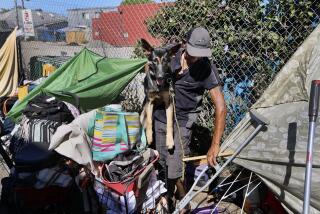A large L.A. homeless camp gets swept away. The big question is what comes next
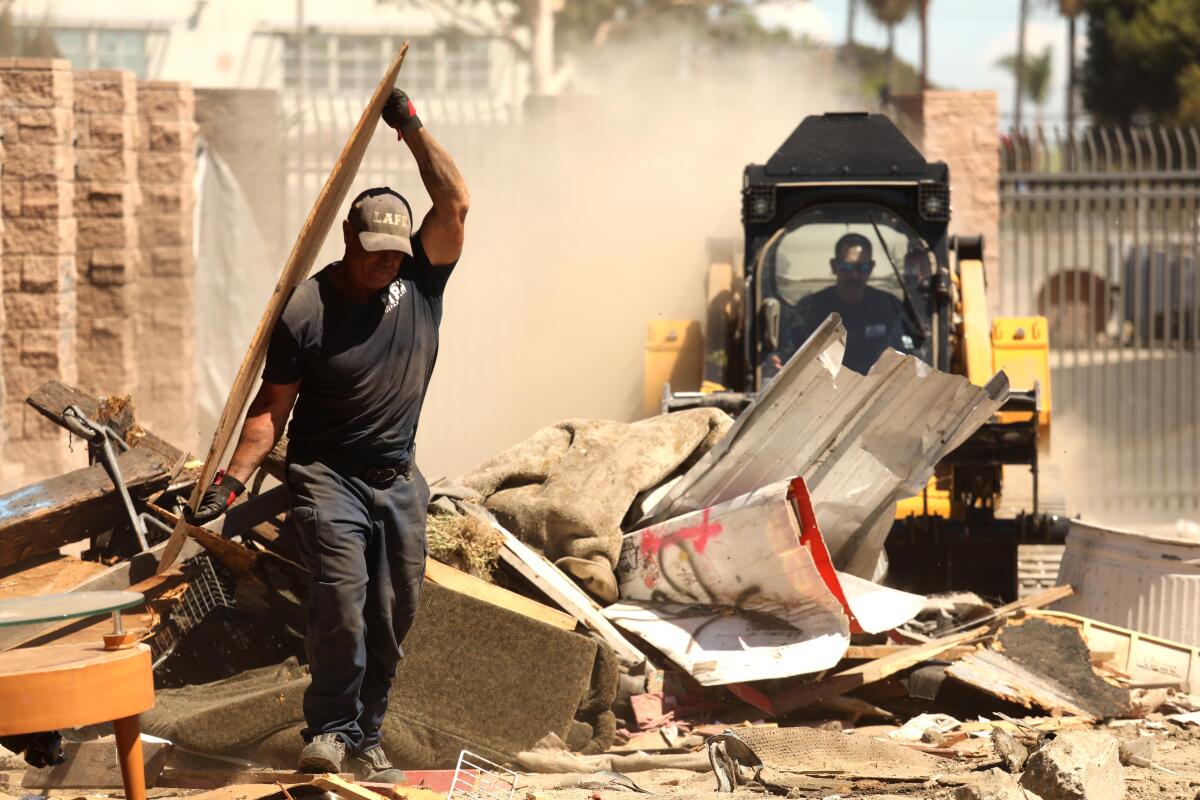
The man who lived in the manhole was gone.
After weeks of visits by outreach workers and last-minute persuasion by police, the row of shanties was abandoned.
By 8 a.m., a bulldozer and a grader were circling the 10-acre vacant lot in Watts, scraping 3-foot-tall weeds and the detritus they concealed into piles. A smaller tractor sifted out clothing, TV and computer parts, infant car seats and broken concrete. A fourth machine with a scoop lifted the concentrate, along with several loads of abandoned tires, into three giant trash containers.
The cleanup Thursday of the city’s troubled Lanzit property was a huge boon to a downtrodden neighborhood, said community activist Germán Magaña, who acts as unofficial spokesman for nearby business owners, residents and even the people who lived on the lot.
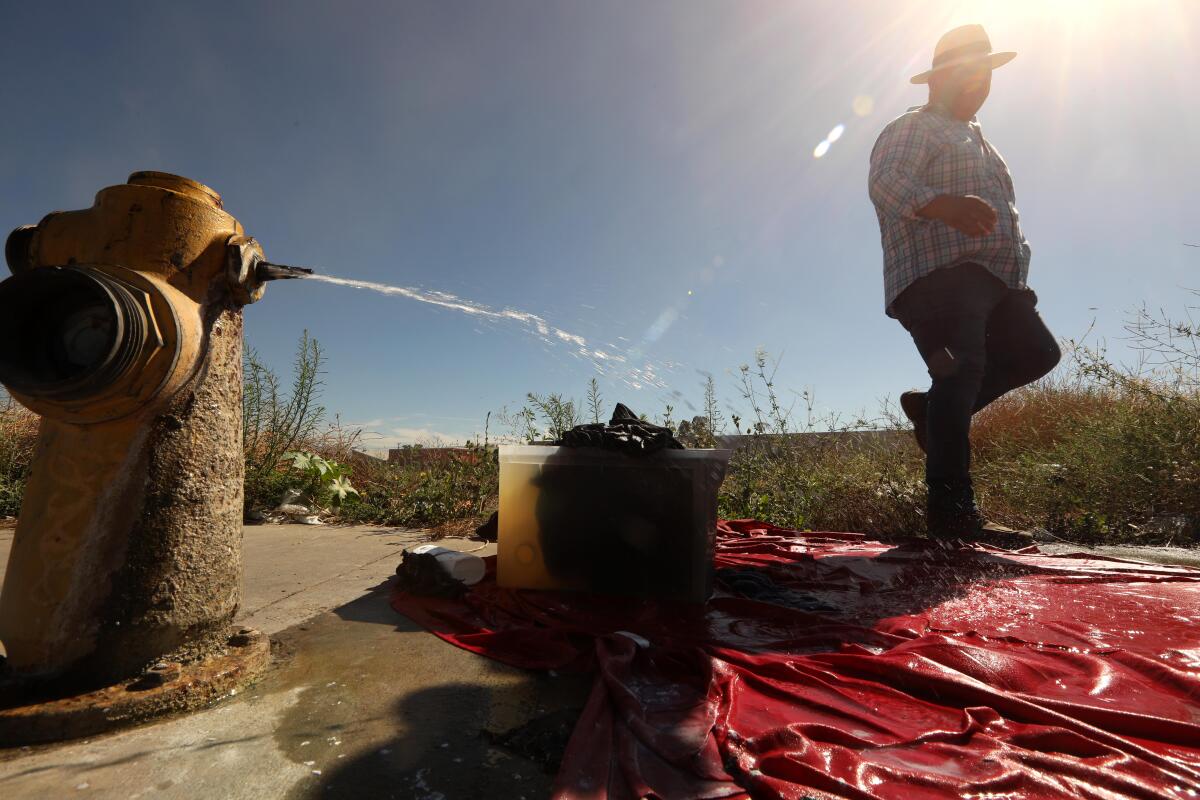
But it was just the beginning of a new phase that will require vigilance to keep the property from falling back into tatters. It will take drive and creativity to overcome 28 years of failure that marked the city’s plans to develop it.
“As of today I’m very happy,” Magaña said. “I know it will take a while for an actual solution of what’s going to be done with the property. It’s a process, and we all understand that. But for the time being, the community, as well as the homeless community, they’ll be better off. A lot have gotten into housing.”
The city purchased the land, just south of 108th Street and a few blocks east of Avalon Boulevard, in 1994 in hopes of revitalizing a community bled of its economic base and traumatized by the 1992 riots. The plan was to bring hundreds of high-tech jobs to Watts with the first industrial development in the area since the 1970s.
As chronicled in a Times article featuring Juan Luis Gonzalez-Castillo, the man in the manhole, at least five development proposals died in a decades-long saga of City Hall intrigue, bureaucratic delays and even bad luck as one developer died soon after his development plan was accepted.
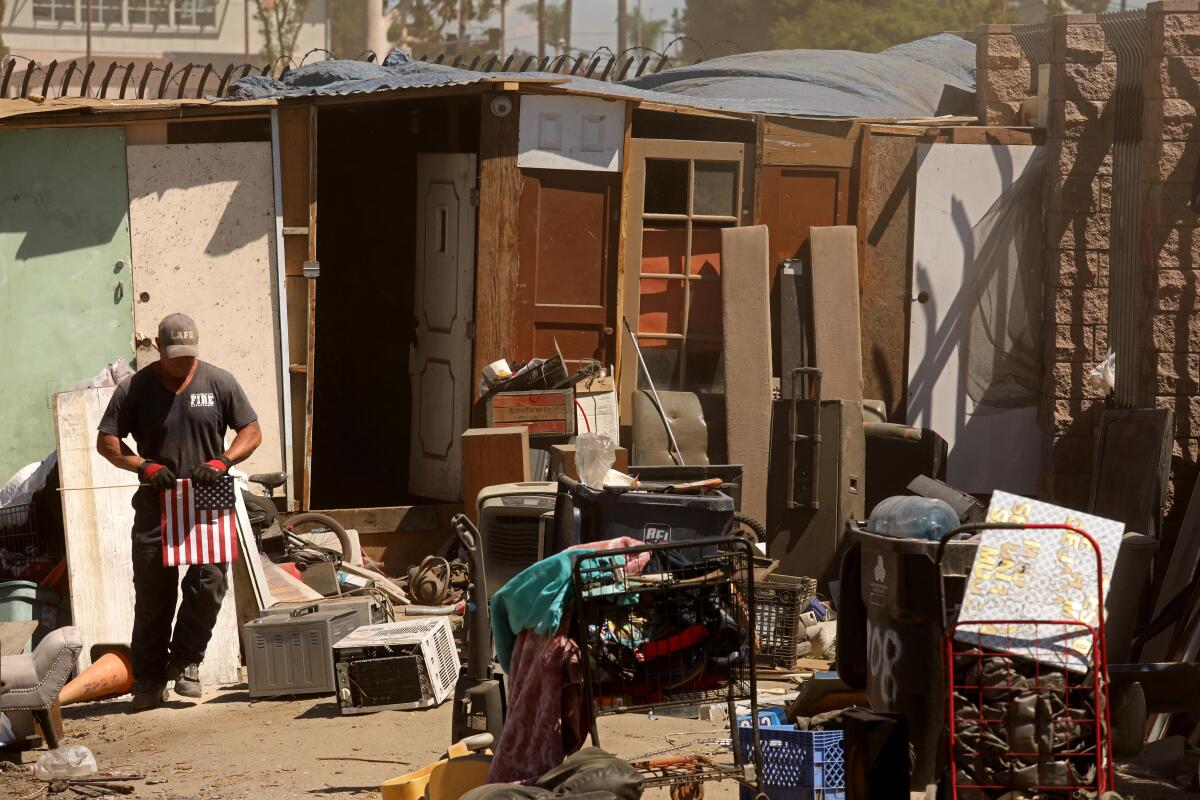
Magaña credited the article for precipitating the city’s response Thursday to the long-festering condition on the lot.
“Perhaps, oftentimes the will is not there,” he said. Or, in a broad reference to the numerous city agencies that had allowed the problems to fester, “Sometimes we’re not aware of what is going on in our districts.
“It makes a huge difference when members of the community, the Fire Department, the police and the councilman’s office work together to make this happen,” Magaña said.
The multiagency project began with earth movers trucked in by the Los Angeles Fire Department.
They circled the property for hours, cutting down the weeds.
Meanwhile, a welding crew from the city’s General Services Department made new repairs to the often-breached fence at the dead-end of 109th Place, the point of entry for thieves getting rid of stripped car bodies.
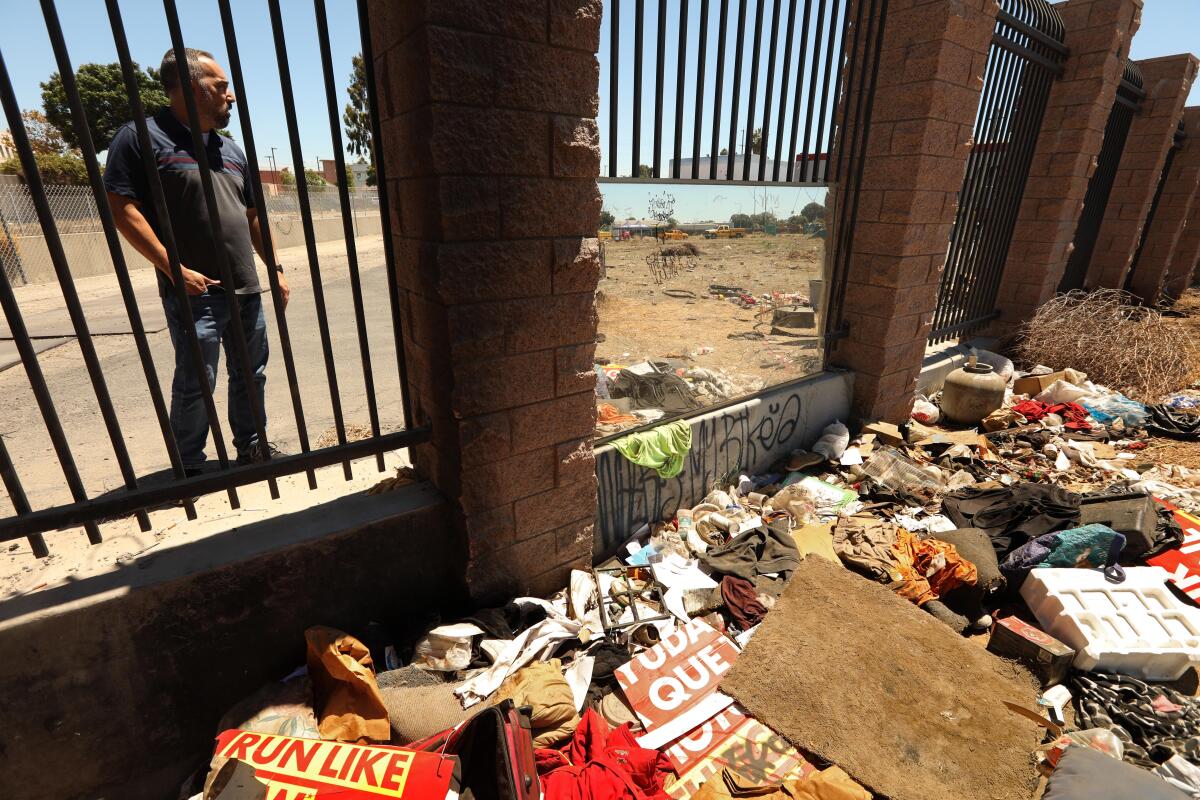
Three outreach workers from Homeless Outreach Program Integrated Care System, or HOPICS, the primary homeless services agency in South Los Angeles, looked into each of the makeshift dwellings to ensure they were abandoned. They said they had found placements for all those who wanted them.
Unfortunately, Gonzalez-Castillo was not among them. They had found him a place to live, and he accepted but later changed his mind, they said. They didn’t know where he was.
L.A. City Councilman Marqueece Harris-Dawson arrived in the early afternoon to observe the final stages of the clean-up from under a canopy erected by his staff on the road in the center of the lot.
As the brush turned into bare dirt, two dogs, either neighborhood strays or left behind by homeless people, began to pace the lot nervously. Officer S. Infante, with Los Angeles Animal Services, showed up to try to capture them. He approached a black Chihuahua and almost had it in his grasp when it bolted. Infante left empty handed as the Chihuahua repeatedly eluded him and the larger dog disappeared.
Mike Balderrama, manager of Cardinal Glass Industries adjacent to the Lanzit lot, watched through a metal stake fence. Occasionally, he looked down at his feet where he pushed a few used syringes with his boot.
“This is where they would sell their drugs,” Balderrama said about residents of the now-vacant shacks.
Balderrama said he welcomed the removal of the immediate threat of a brush fire spreading to the roof of the Cardinal building. But he was concerned that conditions outside the lot would work their way back in.
Compton Creek, a concrete channel bordering the Cardinal properties on the north, was a wasteland of cardboard signs, dirty clothing, a used butane container and other assorted trash. A few paces down the channel bank, a stolen van had been abandoned and another shanty encampment remained, tapping into a power line to run an air conditioner.
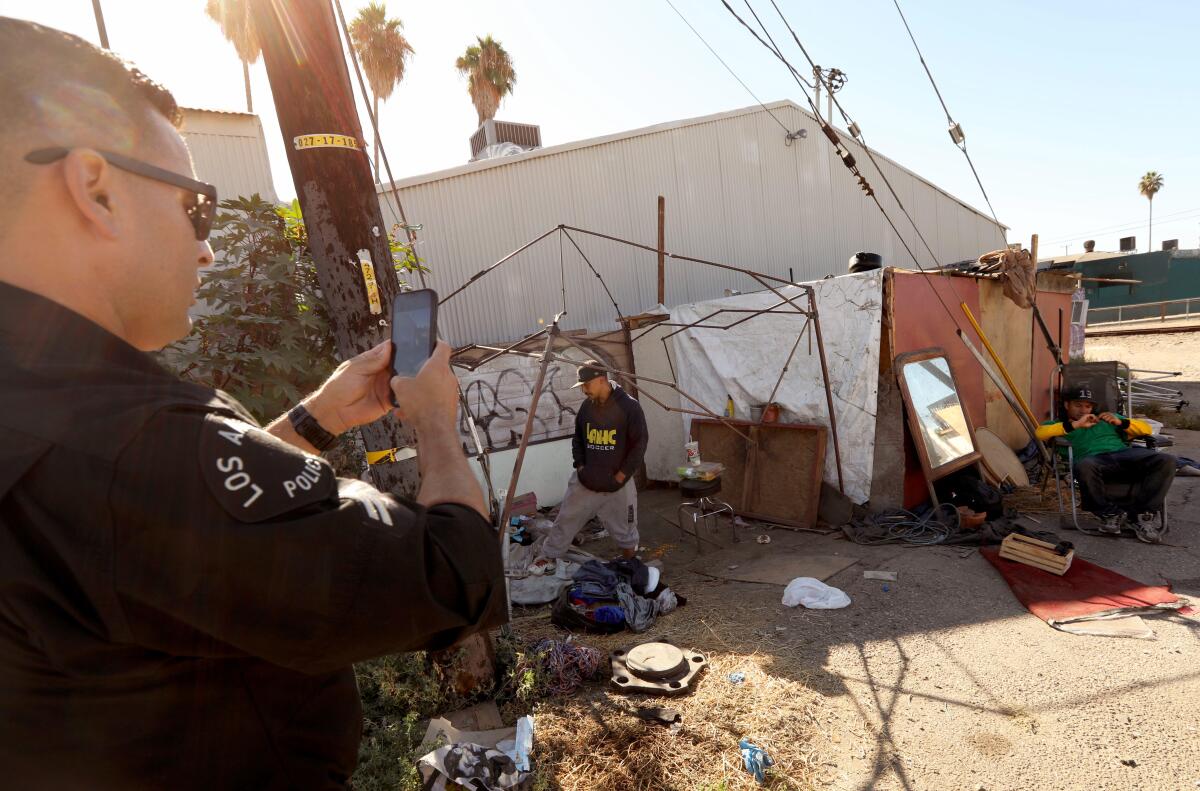
At one point LAPD Senior Lead Officer Armando Leyva, one of several police officers who monitored the cleanup, drove down the channel access road to call for a tow truck to pick up the van. Then he continued to the encampment where he informed two men there that they would have to leave, though he gave them no deadline.
Harris-Dawson said he thinks community activity is the answer.
“Ensuring a space is used regularly by people and families is the best and most sustainable security,” he said in a statement. “
He said he would work with the neighborhood and city departments to determine what type of activities are wanted and feasible.
In the long term, he said, he remains committed to “create a job-rich use, hopefully with manufacturing, that it once was.”
Thursday’s cleanup continued through the afternoon when Capt. Richard Diede of the LAFD Heavy Equipment unit entered the two last remaining shacks to make sure that they were vacant.
He walked past a fan that hung from the ceiling and electrical wiring on the floor connected to a nearby telephone pole. After exiting, he gave the all-clear signal and the bulldozer went to work on the first structure. Another machine joined in shortly, bringing down the second structure.
The job was still not finished when the crews left for the day.
The Fire Department returned Friday to place several concrete freeway barriers in strategic spots to try to keep anyone from illegally entering.
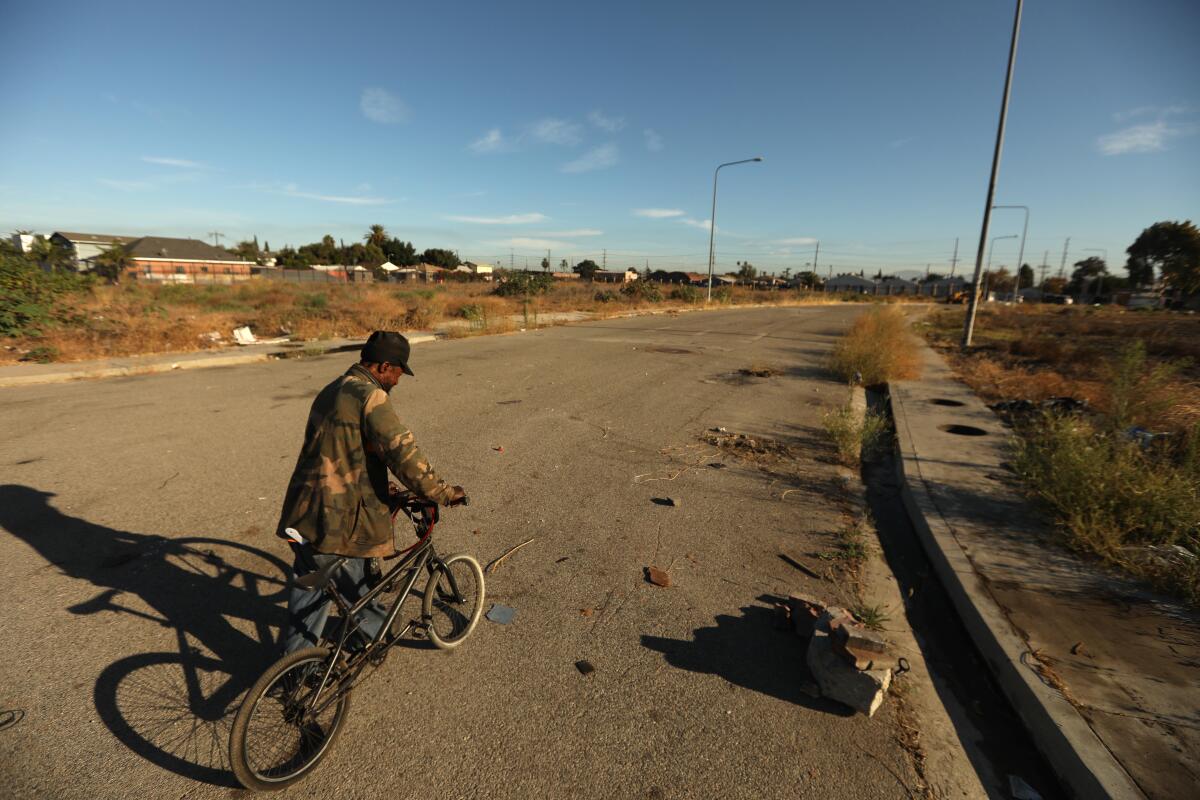
Magaña said that he was proud to see three homeless people from the neighborhood working beside the city crews.
Magaña said he knows many of them to be decent people whose lives could be changed by good jobs. But he added that there are others who are predators, who controlled the camps through fear and stealing from the nearby businesses.
“What I hope from the political offices is they can finally create a separation between the homeless and the criminal aspect of it,” he said. “That will be something beneficial for the community.”
More to Read
Sign up for Essential California
The most important California stories and recommendations in your inbox every morning.
You may occasionally receive promotional content from the Los Angeles Times.

